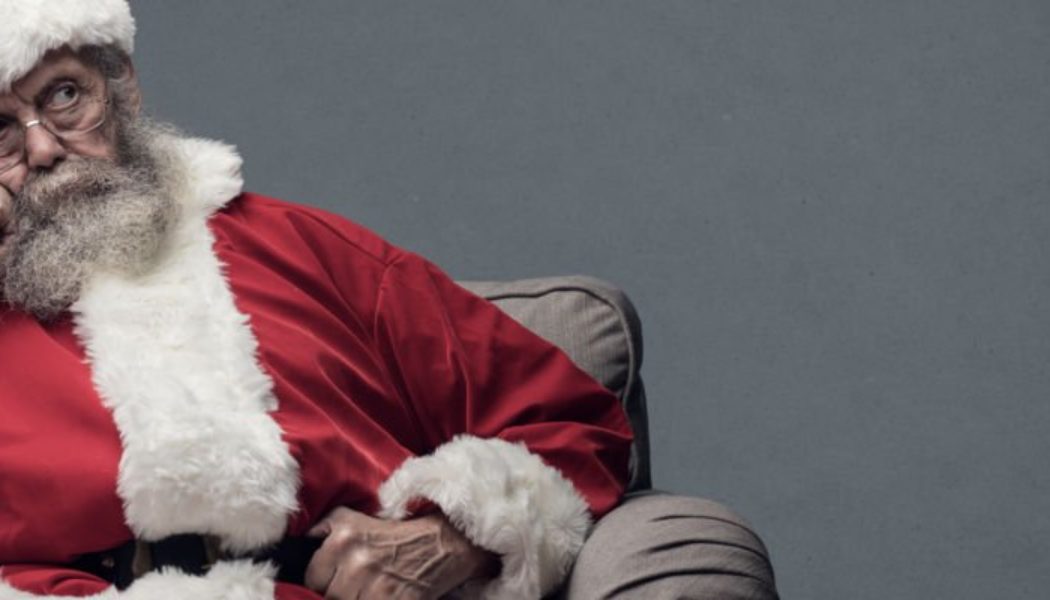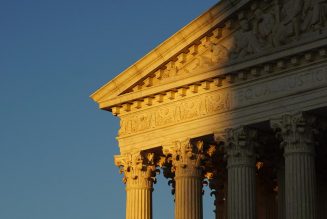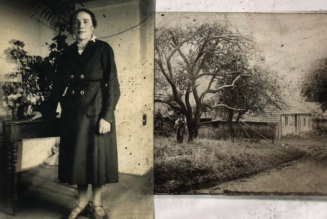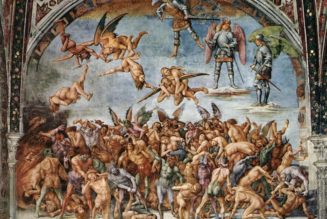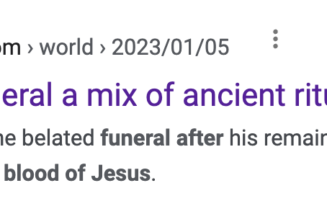
In London, early on a Christmas morning, a family was busily preparing a goose, plum pudding, chestnuts, and other delectable items for the holiday’s feast.
Suddenly, there were loud knocks at the door, which, when opened, did not reveal faces of well-wishers or visiting relatives. What were seen were the stern faces of Parliament’s troops, there to arrest and fine the family for celebrating Christmas Day with a feast instead of the mandated fast.
In 1644, the English Parliament, under Puritan control, declared Christmas a day of fasting. The English people were not to rejoice and celebrate, but were to use Christmas as a day to ponder their sins and the sins of their fathers. Troops were ordered to enforce Parliament’s order, and they patrolled London’s streets and made the rounds of houses.
In Scotland, the Calvinist descendants of John Knox had gone a step farther than the English Puritans by abolishing Christmas as a public holiday.
This dour work by the Puritans and Calvinists would shadow Christmas for some time in English-speaking countries, even after their political power waned—and when it did wane, the Puritans looked beyond England for another place to construct their theocracy. They looked first to the Continent.
They migrated to Holland for a short while but were alarmed as their children began to pick up the speech and customs of the Dutch. It must have been particularly annoying when St. Nicholas processed into town and gave children gifts; he arrived dressed as a Catholic bishop.
The Puritans felt compelled to leave Holland, and they settled in America, establishing the Massachusetts Bay Colony. Their sad and lifeless Christmas Day was transplanted with them. They hoped their children, sometimes referred to by their preachers as “imps of Satan,” could be molded without the Old World’s distractions.
It wasn’t until the nineteenth century that the last of the gloom lifted from Christmas. Much credit is given to Charles Dickens. His Christmas Carol and Pickwick Papers helped melt away the severity of the Puritans’ Christmas. Dickens said, “It is good to be children sometimes, and never better than at Christmas when the mighty Founder of Christianity was a child himself.”
Queen Victoria’s marriage to Prince Albert, a German, saw many old Continental European Christmas customs introduced into Britain through the royal family. They quickly trickled down into the rest of the classes, and they went overseas, too.
The influence of nineteenth-century immigrants from countries beyond Puritan and Calvinist control had a great effect as well. Immigrants to the United States coming from Ireland, Germany, Italy, and elsewhere brought their unsuppressed Christmas customs with them. These blended with the slowly changing Anglo-Saxon customs to form our typical American Christmas.
What was the motive for the earlier puritanical infestivity? It will be found in Calvinism’s attitude toward (really, opposition to) simple pleasures. Calvinism has an anti-incarnational streak within itself. It has not gone unnoticed. British historian Thomas Babington Macaulay observed, “The Puritan hated bear-baiting, not because it gave pain to the bear, but because it gave pleasure to the spectators.” American writer H.L. Mencken wrote, “There is only one honest impulse at the bottom of Puritanism, and that is the impulse to punish the man with a superior capacity for happiness.”
This lack of happiness, the discomfort at seeing others enjoying themselves, still is found in some Protestant sects. The members offer excuses so they won’t have to admit disliking plain old fun. They brand Christmas a “pagan” celebration, saying it is evidence of the Catholic Church’s contamination, decadence, and apostasy.
For many people, Christmas is a shameful thing, as profound a shame today as it was in the sixteenth century. A new member of a sect once told how she had taken all the family’s Christmas lights, bulbs, and other decorations and smashed them all, thereby symbolically smashing Christmas and Catholicism.
The bishops of Rome in the fourth century adopted the date of December 25 as the Feast of the Nativity. Persuaded by John Chrysostom, the Eastern Church joined in, and the universal quality of the celebration for the family of the Church was maintained until the Reformation.
In the first few centuries, when pagan temples were knocked down and replaced by Catholic basilicas, when pagan holidays days were transformed into memorials to the martyrs, saints, and the Lord, there was no misconception about what was taking place. It was an absolute triumph of the Church over paganism. The winter solstice was the astronomical event, written into God’s creation as well as the calendar, used to commemorate Christ’s coming as “The Light of the World.”
This was not going be a half-hearted holiday. Happiness can’t be quantified or rationed. The birth of Christ was bound to be marked with excess because of the spontaneous nature of exuberance.
When the Ark of the Covenant comes home, King David dances and jumps, leaping well outside the bounds of modesty (2 Sam. 12-23). When the woman in Bethany runs up to Jesus, she exuberantly breaks the alabaster jar and pours all the ointment onto him (Matt. 26:6-13). When the wedding guests at Cana drink the place dry, Jesus provides them more wine—to their joy (John 2:1-10).
At Christmas, the champagne is going to spill over the glass. The stomach is going to ache with too much food. Feet are going to be sore, and budgets will be pinched from too much shopping. We should keep in mind Fulton Sheen’s notion about what distinguishes the Puritan from the Catholic. He said the Puritan attitude is, “First comes the feast, then comes the hangover.” The Catholic attitude is, “First comes the fast, then comes the feast.”
Join Our Telegram Group : Salvation & Prosperity
